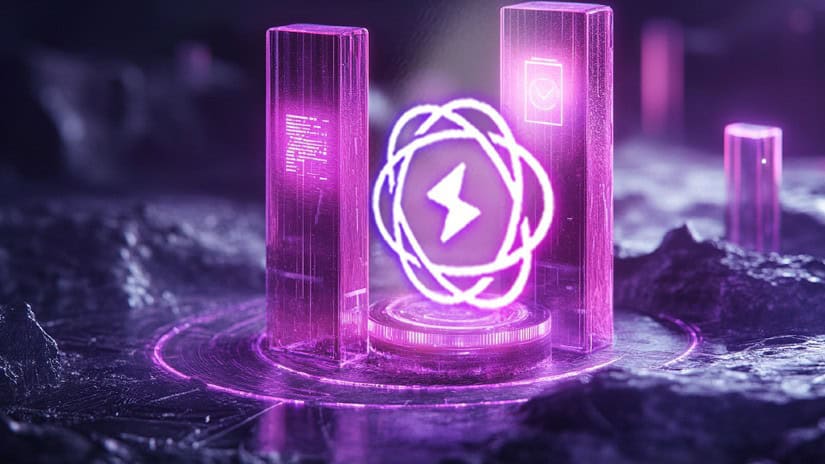Power: on Earth, we tend to take it for granted. Most of your household power is generated from the burning of fossil fuels—coal and natural gas account for roughly 61 percent of US power. Another 20 percent is generated in nuclear power plants. These resources are nonrenewable—experts estimate that we may have 50–100 years of fossil fuels and over 200 years of natural uranium left—but Earth also has access to a treasure trove of renewable energy sources. In 2019, water, wind, and sun produced enough energy to power over 60 million average American households.
No matter where it comes from, accessible energy is plentiful on Earth. But on other planets and in the vacuum of space, energy is a much scarcer resource. On Mars, where several space-based companies and nonprofits plan to eventually establish a human colony, energy can be inconsistent and unreliable.

Take solar energy, for example: With severe, unpredictable dust storms during the days and temperatures as low as -157ºF at night, NASA has had trouble keeping robotic rovers consistently powered by the sun. In February 2019, the NASA rover Opportunity was declared dead after eight months of silence following a massive dust storm that engulfed the red planet. Like many other Mars rovers, Opportunity was engineered with solar panels for daily operation and battery recharge. At night, Opportunity would try to conserve energy while eight radioisotope heaters—pellets of plutonium-238 that spontaneously decay and create heat—would keep its batteries from freezing. But these heaters weren’t enough to keep Opportunity energized after it was buried by the dust storm and trapped in perpetual darkness.
In recent years, new Mars rovers, Curiosity and Perseverance, were engineered to run on power from Multi-Mission Radioisotope Thermoelectric Generators (MMRTG). Power from MMRTGs starts with heat created by the same radioisotope decay that kept Opportunity’s batteries warm. This heat is converted to electricity by solid-state thermocouples—a pair of connected plates that form an electric circuit when their temperatures are disparate. One plate is in contact with the plutonium-238 core, while the other is kept cool.
MMRTGs have been used for a variety of powered space tasks: from missions to the moon and Mars to interstellar missions like the Voyager probes. Plutonium-238 is a favorable choice for these probes since it takes 83 years for half of the atoms in the sample to decay and lose their radioactivity. But plutonium-238 is costly and hard to obtain, and as it decays, its power output declines. A much more sustainable form of energy production would be a nuclear fission reactor that runs on the more abundant uranium-235. Nuclear fission produces energy as a byproduct of the splitting of uranium into smaller atoms through a self-perpetuating chain reaction. Uncontrolled, this reaction can be catastrophic, but carefully designed nuclear reactors can harvest this thermal energy and transform it into usable electricity.

NASA’s first attempt at engineering a space-capable nuclear fission reactor came out of the Systems for Nuclear Auxiliary Power (SNAP) program in the 1960s. SNAP10A was the first such reactor to be launched into orbit, but it was shut off after 43 days due to a malfunction in its electrical system. NASA estimates it will stay in orbit for another 3,000 years. Since then, no new nuclear fission reactors have been launched by NASA, although many have reached the development and testing stages.
The primary failure of SNAP10A, and many of its successors, was technical complexity. But in recent years, a collaboration between NASA and the National Nuclear Security Administration (NNSA) has resulted in the Kilowatt Reactor Using Stirling TechnologY (KRUSTY)—also known as the Kilopower reactor. Unlike previous space-based nuclear fission reactors, the Kilopower reactor was designed around the goals of simplicity and efficiency. Shaped like a flat-topped umbrella that retracts for transport, the Kilopower reactor packs up to ten kilowatts of power (approximately eight average American households) into a compact structure. NASA estimates that four of these reactors would provide enough power for a human outpost, and they could be delivered to Mars and set up robotically prior to human arrival.
Stirling engines, like thermocouples, operate based on temperature differentials. A set amount of gas is sealed between two metal plates, along with a piston. When one of these plates heats up, the gas around it expands and pushes the piston towards the colder plate. The colder plate causes the surrounding gas to contract, which moves the piston back towards the warmer plate. This cycle continues, generating usable kinetic energy that is translated into electrical energy for use in a variety of tasks.

In 2018, NASA announced the Kilopower reactor had passed a series of critical safety and reliability tests, indicating it may soon be ready for a flight test. “Kilopower gives us the ability to do much higher power missions, and to explore the shadowed craters of the Moon,” said Marc Gibson in a NASA press release. “When we start sending astronauts for long stays on the Moon and to other planets, that’s going to require a new class of power that we’ve never needed before.” NASA currently plans to put humans back on the moon by 2024, establishing a lunar colony that would provide valuable data and experience to empower a Mars colony as early as the 2030s.
If you enjoyed this month’s post, check out the space power tag for our previous series on powering interstellar travel! For now, check out last month’s blog post on reading and understanding science papers. Comment or email us at contact@anyonecanscience.com to let us know what you think of this week’s post. And subscribe below for weekly science emails!








Leave a Comment